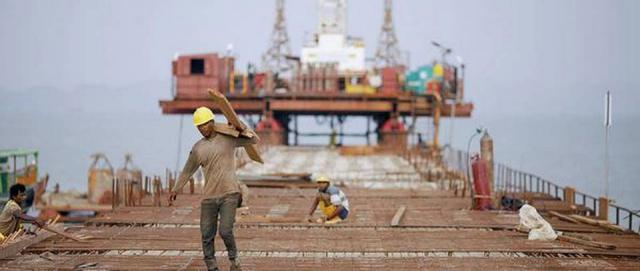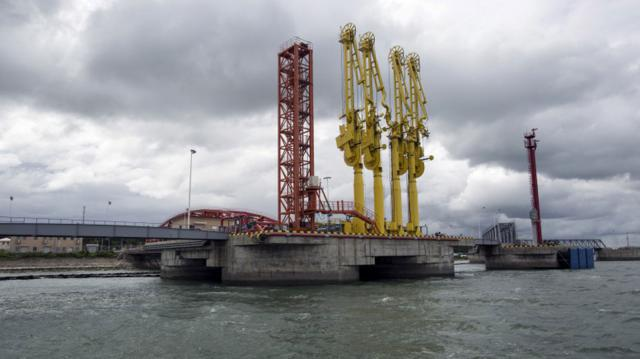
Suddenly, the ASEAN region has caught the attention of India's foreign policy. Indian policymakers are going to ASEAN countries one after another and efforts are being made to make India's presence in various ways significant. And at the end of each tour, the Indian media has been urged to improve relations with Eastern Myanmar. Because Myanmar is the starting point of India's 'Act East' policy. And now Kaladan multipurpose project has become the starting point for Myanmar-India relations. Dhaka seems to have little attention to how this project is going to take the new height of Myanmar-India relations and its response to Bangladesh.
While Myanmar is India's second largest neighbor, the development of Delhi's commercial ambition is slightly smaller than that of China. The trade of both countries is still limited to just two billion dollars, which are many times less than in China. Though there is about 1,600-kilometer border between the two countries, the commercial activities are very nominal. In such a situation, Delhi is a big bet on Myanmar through Kaladan project.
There are five aspects of this project. The first is to build a large cargo that is now known as 'Sittwe Bandar', built in Akyab. The contractor for the construction of Acer Company of India. In the second phase, the Kaladan river was dredged up to 160 kilometers from Sittwe to Palitwa in the Chinese state of Myanmar. In the third phase, the High Lanza 130 km long highway was built from Palawan to India, Mizoram, and in the fourth phase, Mizoram built in is about 100 kilometers long two-lane highway. This is going to Lantau (Mizoram's last village on the border of Myanmar) to Longtai in Mizoram's Lai district. This road will connect the Kaladan project to the National Highway (54) of India. It will be connected from Longtai to Dabaka of Assam till another highway. Through this whole project, India can be completely free from the expense of traveling with the Siliguri Corridor and Assam in connection with their northeast. But the importance of this project is not just that.
It is to be noted that the entire Kaladan project with the above four parts was completed in India, only in the third part was Myanmar's share. Since 2008, construction of this project has started and it is expected that it will be launched in 2015 but only this year will be inaugurated soon. It is a great disappointment for India to not be able to launch the Kaladan project in a decade-long after spending three billion dollars already. The main reason for delaying this project is that China's influence in Myanmar In the third part of the project, there is an unwarranted delay for India. But there was another small reason for the delay, with the project objection to the two sides of the Kaladan river. It is about 10 lakh people living in the river basins. Since this river and ground corridor will greatly affect their livelihood, they are protesting from the very beginning. Even before the start of this huge project, no environmental reaction was seen before. A lot of important information about the project was not published publicly even after the construction began long. Subsequently, under the pressure of 'Kaladan Movement', only the detailed project of the project came into the media.
Meanwhile, due to delayed completion of the project, India has to keep regular dredging in the Sittwe port area and in the Kaladan river, which makes this project very costly. However, India is desperate to launch the project soon. The Rohingya crisis of Bangladesh has provided an additional opportunity for India in this regard. Standing beside Myanmar in international diplomacy, India has only enhanced Myanmar's zeal for Kaladan project.
However, India's Myanmar-centric ambition is not only stuck in the Kaladan corridor. They are also going to be a special economic zone for thousands of acres of Akyab. Needless to say, it is being challenged by China's special economic zones in nearby Kyayakapu. In addition, India's dream is that when the Kaladan project is successfully launched, they can set up gas pipelines from Sittwe to Aizawl and Siliguri.
Apart from this, India is giving top priority to the implementation of a tri-national road plan from Manipur to Thailand. It will also be on Akiyab. At the beginning of this year, Modi has mentioned the details of the 1,700 km long tri-nation road to the leaders of ASEAN 10 countries, this will be the main corridor for the expansion of the ASEAN market in India. In this way, India wants to build 69 bridges damaged in World War II. The big project is about the successful launch of the dependent Kaladan project. And it is also noteworthy that as Delhi faces the Belt and Road, Delhi goes ahead with the Manipur-Mandalay-Akiab-Bangkok Highway.
Meanwhile, while India is struggling to launch the Kaladan project in Arakan, China will have a large oil pipeline of $ 1.5 billion in the same area.

The two oil and gas pipelines above billion dollars that have created a geopolitical interest for China in Arakan, Bangladesh may not have noticed it. Like the Kaladan project, China's two pipeline projects also started about 8-10 years ago. It is not understandable why Bangladesh did not realize the future significance of these projects so long.
Besides India and China's two ports, Akadia's Kaladan project and China's two pipeline projects, along with the desperate efforts to build India's triangular highway, it is obviously enjoying Myanmar. Because, from each such project, the rulers of the country are getting a lot of revenue on one hand, while the geopolitical importance of their country is increasing. Arakan has become the most important geopolitical field in the country even after being a small state of Myanmar. Arakan, especially for China and India, is as important as their own land. Bangladesh has not only failed to understand the above-mentioned reality in the last 10 years, but the Kaladan project has failed to realize that the strategic importance of Bangladesh will be reduced to India only. What is particularly noticeable is that the India-Bangladesh transit discusses the incongruity and ambiguity of the negotiations. India will not be more dependent on its northeast if Kaladan project is launched. Apart from Tripura and Meghalaya, India can easily carry out all its activities, including trade, through short-term and low cost, through the Kaladan project. In addition, in those states, it is estimated that the merchandise available to Bangladesh will be terminated by the Kaladan project. Indian goods through Kolkata and Sitwai port will reach Aizawl, Kohima, and Guwahati before commodity of Dhaka.








 have them settled first.
have them settled first. 



 Good luck.
Good luck.